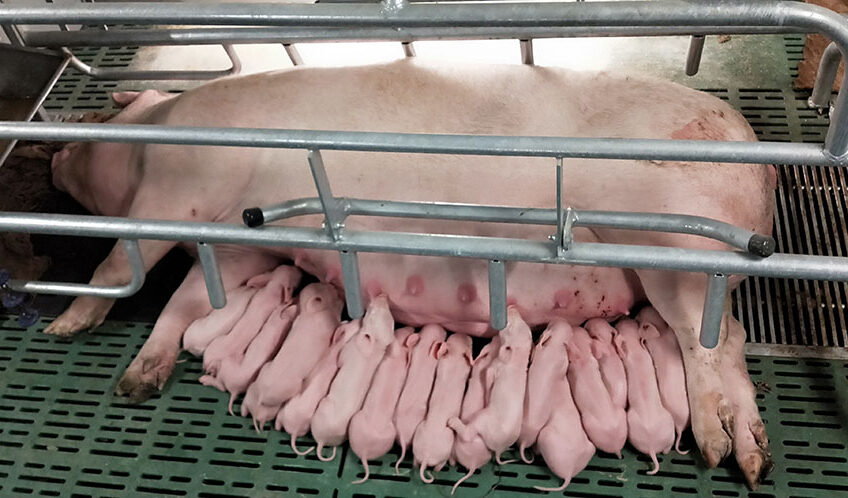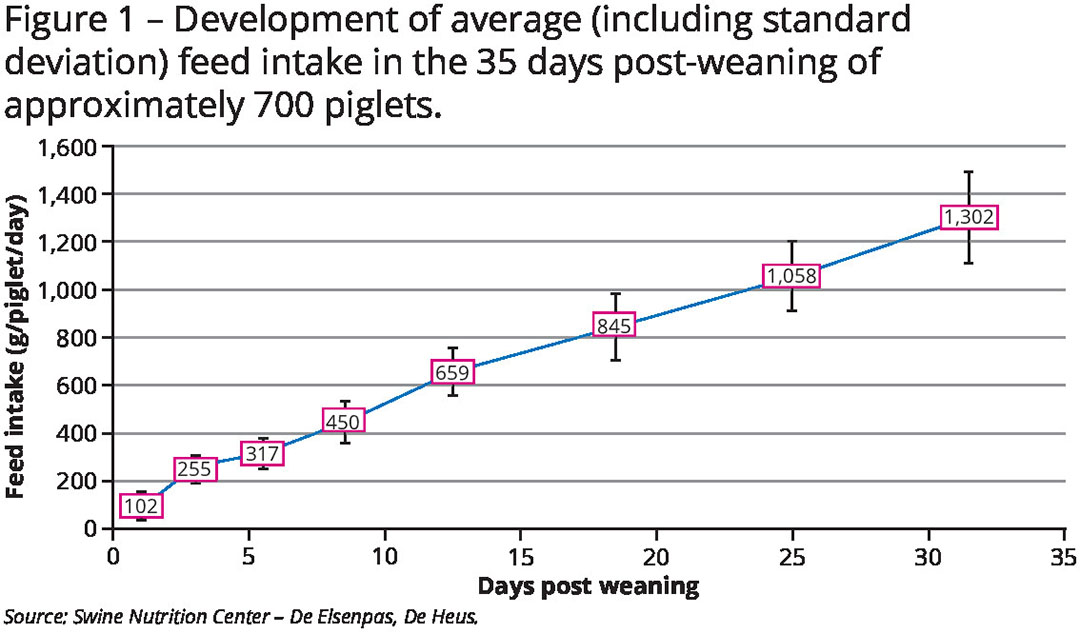Successful weaning depends on 3 conditions

In the European Union, growth-promoting antibiotics have been banned and, from this year, zinc oxide at pharmacological levels can no longer be used. Is it still possible to achieve excellent performance with post-weaning piglets? The answer is yes, but 3 conditions need to be met.
The health status of the farm is an important starting point for good piglet performance, as weaned piglets are vulnerable to becoming infected with prevalent pathogens. The combination of weaning stress and often low post-weaning feed intake will harm a piglet’s intestines. That creates a port of entry for prevalent pathogens; for a piglet, this is a poor way to start the nursery phase.
Biosecurity measures
External biosecurity measures are very important to prevent pathogens from entering the farm. For present pathogens, internal spread should be limited as much as possible. Internal biosecurity measures need to be applied, for example, proper working routes (from young to old animals), using separate tools (with different colours) for different pig categories, etc. Applying biosecurity protocols with clear working instructions for animal caretakers is also a good way to keep levels of internal and external biosecurity high.
1. Healthy sows, vital newborn piglets
Healthy sows are required for vital newborn piglets, and that starts with rearing healthy gilts. Those gilts need to be raised with a steady development of bone and reproduction organs. For sufficient milk production during lactation, it is important that gilts get the right nutrition for proper udder development; this begins at 90 days of age. Achieving the correct body weight and backfat thickness at first insemination is also very important. The correct body condition depends on the gilt’s genetic origin. During gestation, gilts should be fed to their nutritional requirement.
Special care needs to be taken around farrowing. The aim is a smooth and short farrowing process and sufficient colostrum production. Once fulfilled, these factors will ensure vital piglets with a high birthweight: an excellent start to a piglet’s life.
2. High pre-weaning feed intake
Sufficient colostrum and milk intake from their mother is the best way for piglets to grow during the farrowing phase. However, for a good weaning transition it is also important that prior to weaning piglets learn to digest non-milk raw materials. Research by De Heus Animal Nutrition shows that a high pre-weaning feed intake results in a good post-weaning feed intake. To ensure a high pre-weaning feed intake there are several important points to consider:
Start early: Depending on the product, creep feed can be offered as early as from day 2 onwards;
Choose the correct feeder place. Since piglets learn feeding from their mother, place the feeder next to the head of the sow;
Provide fresh feed: Make sure that piglets always have fresh feed. That means starting with small amounts at least three times per day. Feeders should be highly accessible and always kept clean;
Change timing to the next feed: For each litter the daily feed intake will determine when it is time to change to the next feed. That will not only save costs but will also help develop the piglet’s gastrointestinal tract. In turn, a further developed gastrointestinal tract will cope better with the changes around weaning;
Avoid changing feed around weaning: The feed that piglets received prior to weaning should also be fed in the first days post-weaning. Every feed transition means an adjustment for a piglet’s gastrointestinal tract. That often leads to unwanted temporary feed intake reduction.
3. 5-star post-weaning environment
When piglets arrive in the nursery, 5-star housing conditions need to be provided.
Fresh feed in clean feeders needs to be present when piglets arrive in their nursery pen. It is not only the feed that should be familiar for the weaned piglets, but also the feeder. For instance, if a round feeder is used in the farrowing pen, a similar feeder can be temporarily placed in the nursery as well (from a biosecurity perspective, a feeder should not be moved from the farrowing room to nursery). That will encourage piglets to start eating quickly after weaning. And always provide fresh water (minimum water flow of 0.7 litre/minute) with enough drinking space (maximum of ten piglets per drinker). Consider additional water supply in the first week to ensure sufficient water intake.
Keeping litters together will prevent fighting to establish a new hierarchy within the nursery groups. In addition, it will also prevent spreading of prevalent pathogens from the farrowing unit. When mixing is necessary, it is vital to make sure there is plenty of environmental enrichment available in the nursery pen. That will reduce aggressive interactions between piglets.
When placing weaned piglets, the nursery room should be dry and have the correct temperature. The temperature should be aligned with the piglet’s body weight at weaning. In many farms the weaning weight has increased but the nursery temperature setting has not changed. If floor heating is used, the floor should have the correct temperature, as immediately after nursery placement the piglets will determine their lying area and dunging area. The piglets will need to have fresh air, but draught should be prevented. Climate sensors are available that can help check the piglets’ air quality (e.g. ammonia and CO2levels).

Integral approach for post-weaning success
When all these factors are respected, piglets should be able to better overcome the weaning challenge. That will result in a quick start up of feed intake in the nursery. This is followed by a steady feed intake increase as shown in Figure 1. This will ensure that the digestibility capacity of the intestinal tract will stay intact and subsequently will positively affect post-weaning performance. To give a concrete example, at De Heus’ Swine Nutrition Center – De Elsenpas in the Netherlands, those 3 conditions are met, in combination with providing feed without antimicrobial growth promoters or zinc oxide. The outcome is piglet growth from 9.1 kg to 29.7 kg in five weeks, with an average daily growth of 587 g, 0.3% mortality and 1.4% needing individual antimicrobial treatment.







